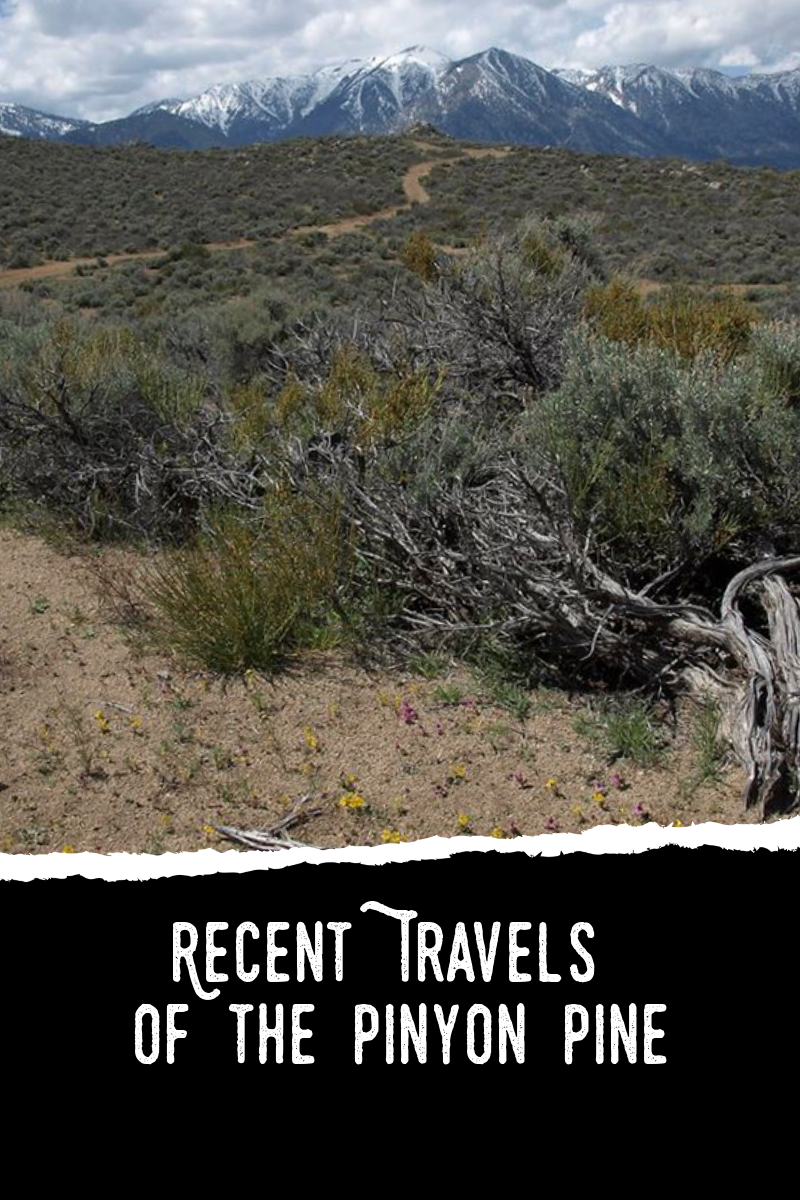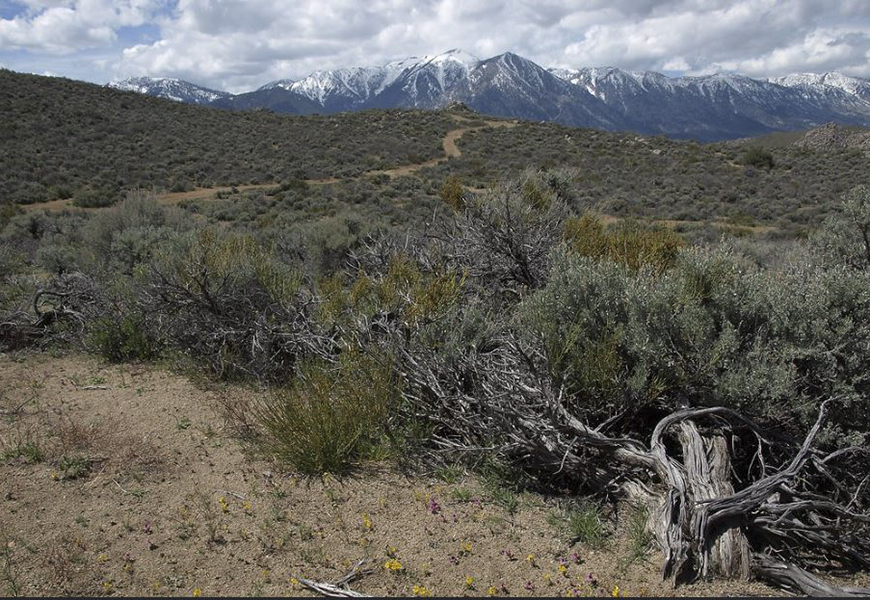It goes without saying for most visitors to our Carson Valley trails that the Pinyon Trail provides a very different botanical experience from any of the west-side trails. In several different ways, we have geology to thank for this, starting in the age of the dinosaurs.
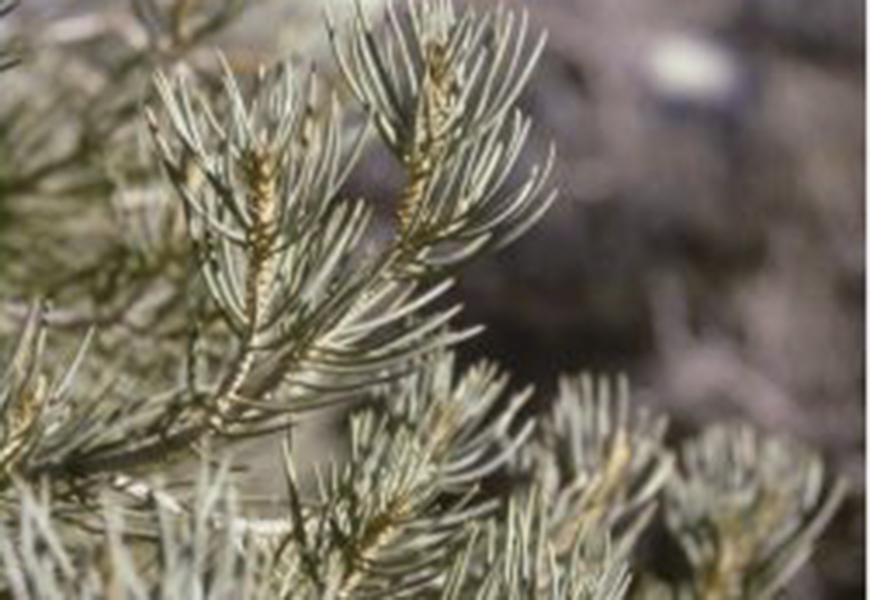
Singleleaf Pinyon Pine
Sometime between 100 and 200 million years ago, the limestone that now underlies much of the Pinyon Trail was first deposited in a sea-bottom environment. When later exposed at the surface, the calcium carbonate in limestone creates difficult growing conditions for many plants, but allows different, carbonate-tolerant species to grow and compete there instead. The Pinyon Trail is our only trail through limestone soils, and has a much different flora to show for it (see accompanying guide to the trees and shrubs, click here and scroll to page 5).
Next fast-forward to the past 10 million years. Travelers across the present-day Sierra Nevada often notice how abruptly the vegetation changes as they cross into (or out of) the east-side deserts. Scientists have long recognized that the Sierra Nevada rain shadow creates one of the strongest and most sudden ecological transitions in all of North America. Over a distance of 15 miles or less, tall conifer forests give way to sparse desert shrublands and woodlands. Average annual precipitation drops from about 31 inches at the top of Kingsbury Grade, to about 16 inches at the Pinyon Trail trailhead, and about 9 inches on the valley bottom in between. But this hasn’t always been so.
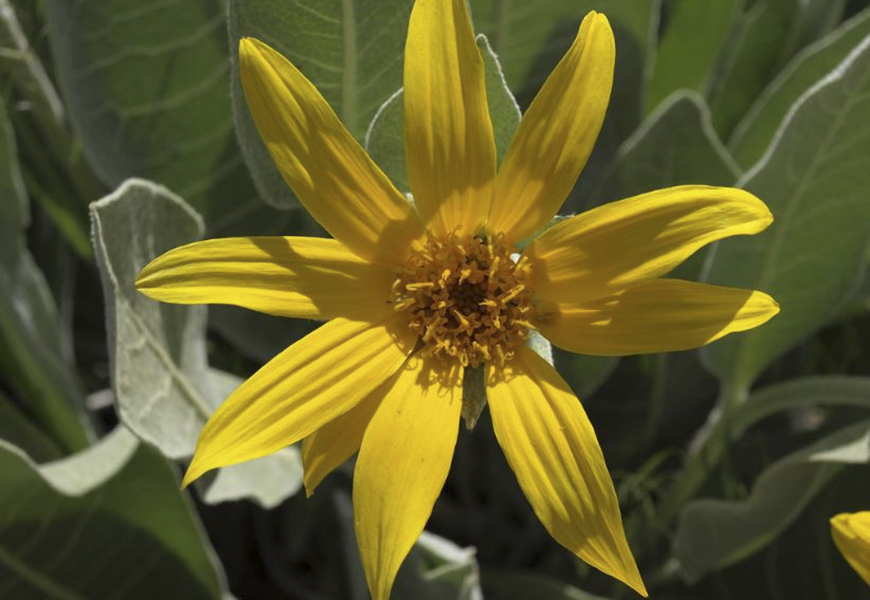
Mule Ears
Ten million years ago the Sierra Nevada and Pine Nut Mountains were hardly bumps on the landscape, and they didn’t start their greatest uplift until 2 to 3 million years ago. Before that time, the prehistoric Nevada and California vegetation was much more uniform from east to west, and was composed of different species adapted to a wetter climate. Most of the dominant drought adapted woody species that we now take for granted in western Nevada, like sagebrush, rabbit brush, and juniper, are relative newcomers. Not nearly as new, however, as our pinyon pines.
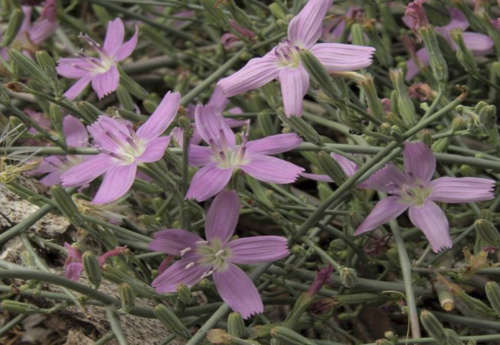
Annual Mitra
Now fast-forward to the end of the most recent North American glaciation, about 12,500 years ago. The Sierra Nevada and Pine Nut Mountains had reached their present-day heights, that ancient sea-bottom limestone was now exposed at the surface and weathering to form soil, and the Sierra Nevada rain shadow was in full force. Early Native Americans were populating the continent. Much of our current woody flora was already present, though generally at lower elevations than now. But pinyon pine was nowhere to be found.
Several lines of fossil evidence show that singleleaf pinyon pine (Pinus monophylla) was confined mainly to the Mojave Desert during the last glacial period. As the glaciers retreated and the climate warmed beginning about 12,500 years ago, the average limit of summer monsoon rains started shifting farther northwest into the Great Basin. This plus warming winters allowed pinyon pines to begin a slow march northward into the Great Basin, only reaching their namesake Pine Nut Mountains roughly 2,000 years ago.
There is no reason to think that this northward migration has stopped yet, and indeed it could now be accelerating. Efforts by some range managers to “control” invasion of pinyon-juniper woodland in the Great Basin may be akin to plugging a leaky dam with chewing gum. There are greater forces still at work, and the results are there to see along our Carson Valley trails.
This article by Jim Morefield is reposted from the Carson Valley Trails Association Winter 2019 newsletter.
